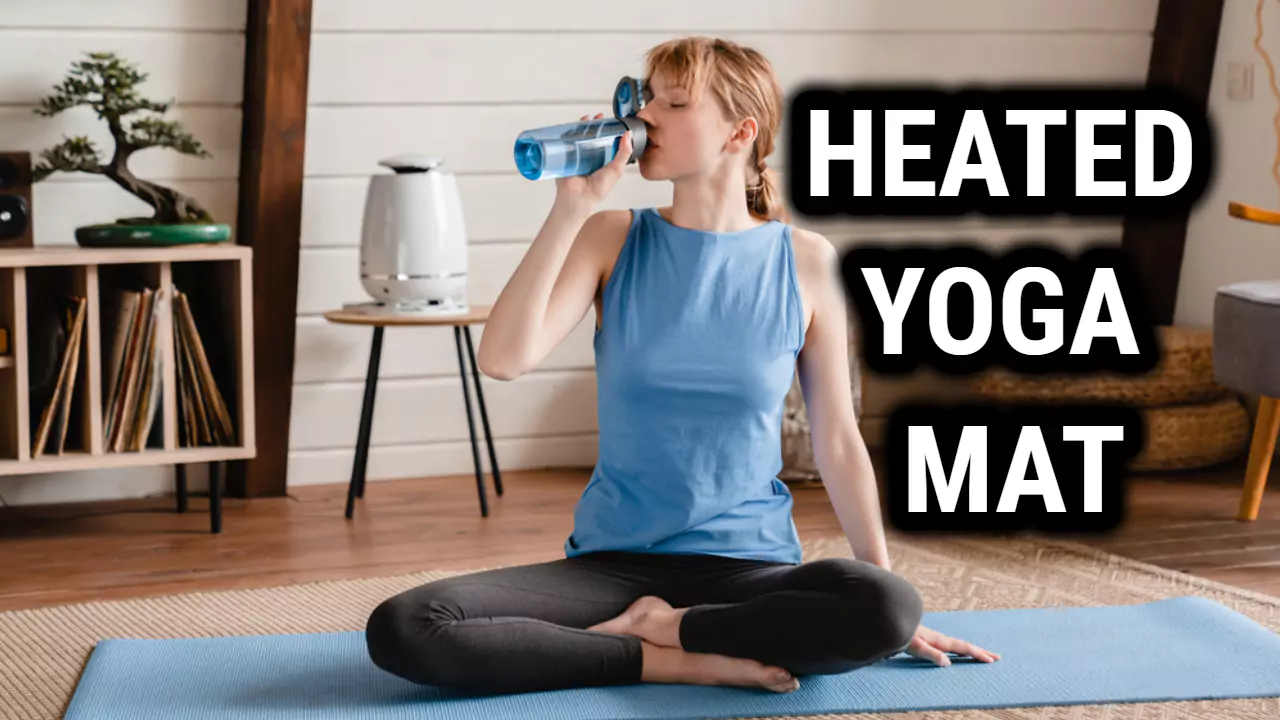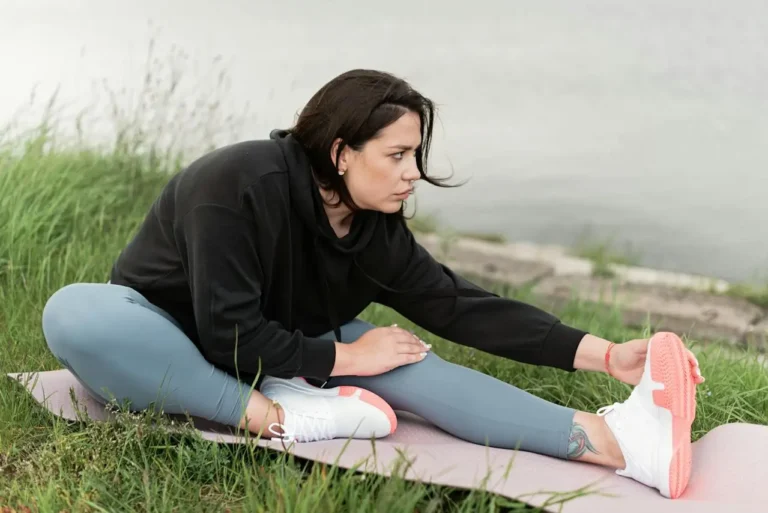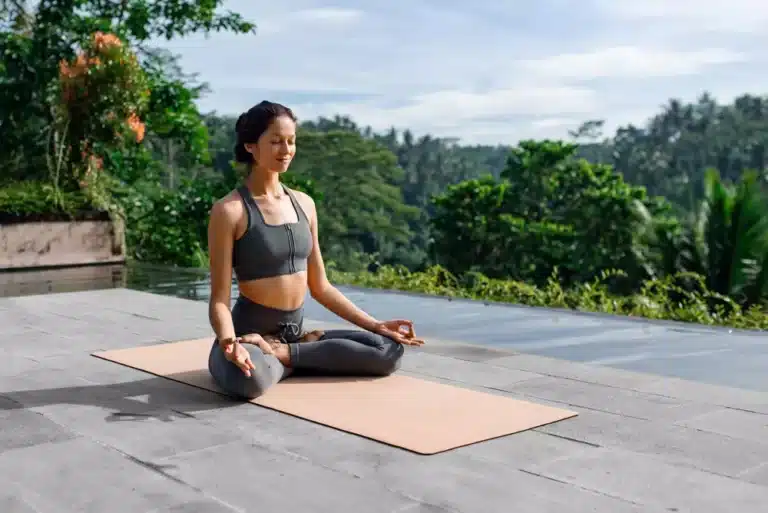Heated Yoga Mat: Enhancing Your Yoga Practice with Warmth and Comfort

Yoga is a great way to stay relaxed and healthy, but it can get a bit chilly as you move from pose to pose. That’s why heated yoga mats are becoming increasingly popular.
Imagine the warmth of a summer day enveloping your body as you relax into your yoga poses. It’s like having a mini-sun right at your feet!
Not only that, but heated yoga mats can help you move more deeply into poses, while providing a feeling of comfort and relaxation.
Whether you’re a beginner or an experienced yogi, investing in a heated yoga mat can be the perfect way to take your practice to the next level.
1. What is a Heated Yoga Mat?
Purpose of heated yoga mats
A heated yoga mat is a specially designed mat that emits gentle warmth during your yoga practice. It serves as a comfortable foundation for your poses and provides a cozy environment to enhance your overall experience. The purpose of a heated mat is to create a warm and inviting space that promotes relaxation, flexibility, and the release of tension.
How heated mats work
Heated mats incorporate advanced heating technology to radiate warmth evenly across the surface. These mats are equipped with heating elements that distribute heat through the layers, ensuring a consistent and soothing temperature. With adjustable temperature controls, you have the freedom to set the heat level according to your preference.
Different types of heating technology used in yoga mats
There are a few different types of heating technologies used in yoga mats, each with its unique advantages. Here are some commonly found heating technologies:
- Carbon fiber heating: Carbon fiber heating elements are thin and flexible, providing an even distribution of heat. They are durable, energy-efficient, and safe to use.
- Far infrared (FIR) heating: FIR heating technology emits radiant heat that penetrates the body, promoting blood circulation and relaxation. It is known for its therapeutic properties and has gained popularity in the wellness community.
- Heating wires: Some mats use heating wires woven into the mat’s fabric. These wires generate warmth and evenly distribute it across the mat’s surface.
2. Benefits of a Heated Yoga Mat
Using a heated yoga mat offers a multitude of benefits that can enhance your yoga practice and overall well-being. Let’s explore some of the remarkable advantages:
Improved muscle flexibility and range of motion
The gentle warmth from a heated yoga mat helps relax and loosen your muscles, allowing for increased flexibility and range of motion. As you move through your poses, the heat encourages your muscles to let go of tension, making it easier to achieve deeper stretches and explore new postures.
Enhanced relaxation and stress relief
Yoga is renowned for its ability to reduce stress and promote relaxation, and a heated mat takes this experience to another level. The warmth envelops your body, creating a cozy and comforting environment that calms the mind and melts away stress. It’s like receiving a warm, gentle hug throughout your practice.
Increased circulation and blood flow
The warmth generated by a heated yoga mat helps to stimulate blood circulation throughout your body. As the heat gently penetrates your muscles, it dilates your blood vessels, allowing for improved circulation. This increased blood flow delivers oxygen and nutrients to your muscles, aiding in their performance and recovery.
Aid in muscle recovery and injury prevention
After an intense workout or a challenging yoga session, your muscles may need some extra TLC to recover effectively. The soothing warmth of a heated yoga mat can help alleviate muscle soreness and promote faster recovery. The heat helps to relax tight muscles, reduces inflammation, and supports the healing process, reducing the risk of injuries.
Potential benefits for certain health conditions
Heated yoga mats have shown potential benefits for individuals with specific health conditions. The therapeutic warmth can provide relief for conditions such as arthritis, chronic pain, and muscle stiffness. However, it’s important to consult with your healthcare professional before incorporating a heated mat into your routine to ensure it aligns with your specific needs.
3. Setting Up Your Heated Yoga Mat
To get the most out of your mat, take a few minutes to investigate the truth of the theory that the temperature you set it to affects the intensity of your workout.
First, make sure to read the care instructions and any electricity requirements for your mat. Then, decide the temperature settings you’d like to use.
When setting up your mat, make sure to place it on a flat surface and in a spot where you can easily access the heat levels.
Finally, if you’re using an electric mat, be sure to plug it in and turn up the temperature to the desired setting.
Once your mat is all set up, you can start your yoga practice and get the most out of each move.
Remember, the temperature settings you choose can determine the intensity of your workout, so adjust the heat as needed.
With the right heated yoga mat and the perfect temperature, you can get the most out of your practice and take your yoga to the next level.
4. Common Safety Concerns with Heated Yoga Mats
Although heated mats can be a great way to deepen your practice, it’s important to be aware of the safety concerns that come with them.
The most important thing to consider is the risk of overheating. If the temperature of the mat is not regulated properly, it can cause burns or other injuries.
You should make sure the mat has a temperature control feature so you can adjust the temperature to your comfort level. It’s also important to make sure the mat has some sort of sweat protection. This will help protect the mat from any liquids that may come in contact with it.
Additionally, you should consider the power options for the mat. Some mats are powered by a wall socket, while others may use batteries or another type of power source.
Finally, it’s important to make sure the mat has enough cushioning layers to provide comfort and support while also protecting you from the heat.
By taking all of these safety concerns into account, you can make sure you get the most out of your heated yoga mat.
5. Factors to Consider When Choosing a Heated Yoga Mat
When selecting a heated yoga mat, several factors come into play to ensure you find the perfect match for your practice. Here are some key considerations to keep in mind:
Heating mechanism and temperature control
- Look for a mat with reliable heating mechanisms like carbon fiber or far infrared (FIR) technology.
- Ensure the mat has adjustable temperature controls, allowing you to customize the heat level according to your preference and needs.
Material and durability
- Opt for mats made from high-quality and durable materials that can withstand regular use.
- Consider a mat with a non-slip surface to provide stability during your practice.
- Look for mats that are easy to clean and maintain for long-lasting use.
Size, thickness, and portability
- Choose a mat that suits your preferred size and thickness, providing enough space and cushioning for your practice.
- Consider the portability of the mat if you plan to carry it to yoga classes or while traveling.
Safety features and certifications
- Ensure the mat has safety features such as automatic shut-off timers or overheating protection.
- Look for mats that are certified by recognized safety standards to ensure they meet quality and safety requirements.
Additional features and accessories
- Some mats come with additional features like antimicrobial properties, waterproof surfaces, or built-in speakers for guided meditations or music.
- Consider any extra accessories that might complement your practice, such as carrying bags or straps.
6. Tips for Using a Heated Yoga Mat Safely
To ensure a safe and enjoyable experience with your heated yoga mat, here are some essential tips to keep in mind:
Precautions to take before using a heated mat
- Consult with your healthcare professional if you have any pre-existing health conditions or concerns.
- Read and follow the manufacturer’s instructions and safety guidelines provided with the mat.
- Avoid using the mat if you have open wounds, burns, or skin sensitivity.
Proper usage guidelines and recommended session duration
- Start with lower heat settings and gradually increase the temperature as your body adjusts to the warmth.
- Limit your session duration to recommended guidelines provided by the manufacturer or seek guidance from a yoga instructor.
- Stay hydrated during your practice to ensure optimal body temperature regulation.
Cleaning and maintenance instructions
- Follow the cleaning and maintenance instructions specific to your heated mat to keep it in good condition.
- Some mats may be spot cleaned, while others may require gentle handwashing or specific cleaning products.
- Allow the mat to fully dry before rolling or storing it to prevent moisture buildup.
Safety tips to avoid burns or injuries
- Always practice yoga barefoot on your heated mat to ensure proper grip and stability.
- Avoid placing the mat on uneven or slippery surfaces to prevent accidents.
- Be cautious when transitioning between poses to prevent slips or falls.
7. Different Types of Heated Yoga Mats
You can take your practice to a whole new level with the different types of heated mats available! Heated yoga mats range from ones that use electricity, battery power, and even gas to provide heat.
Depending on the source of heat, you may have temperature control options, which can be especially useful in a heated yoga class. Each type of heated mat also has advantages and disadvantages that you should consider before making your purchase.
For instance, mats heated by electricity can be more easily adjusted, while gas-powered mats are more durable and can be used outdoors. The material used to make heated yoga mats can also vary greatly.
Common materials include PVC, rubber, and foam. Each material has its own advantages and disadvantages, so it’s important to research each one and decide which one best suits your needs. Additionally, you should also consider the cleaning methods that are needed for each mat.
Some heated yoga mats are machine-washable, while others may require more delicate handling, such as wiping with a damp cloth.
8. Heated Yoga Mat Alternatives
If you’re looking for a way to take your practice to the next level without investing in a heated mat, there are plenty of alternatives available. You can find the perfect solution for your yoga routines and stress relief, from alternative heating methods to temperature control and eco-friendly options.
Here are some great alternatives to heated yoga mats:
- Utilizing heated rooms: Many yoga studios have heated rooms that can help to increase your flexibility and relax your muscles.
- Utilizing hot stones: Hot stones are a great way to relax your muscles and reduce stress. Plus, they’re easy to use and can be used in all types of yoga routines.
- Utilizing heated blankets: A heated blanket is a great way to keep your body warm and reduce stress. They’re also eco-friendly and easy to use.
Frequently Asked Questions (FAQs) about Heated Yoga Mats
Are heated yoga mats safe?
Yes, heated yoga mats are generally safe when used according to the manufacturer’s instructions and safety guidelines. It’s essential to choose a mat from a reputable brand, follow proper usage guidelines, and consider any individual health conditions or concerns.
Can heated yoga mats be used by everyone?
Heated yoga mats can be used by most individuals; however, it’s important to consider personal health conditions or concerns. If you have any specific medical conditions, it’s recommended to consult with your healthcare professional before incorporating a heated mat into your practice.
How long should a heated yoga mat be used?
The recommended session duration may vary depending on the mat and manufacturer. It’s best to refer to the guidelines provided with your specific mat or seek guidance from a yoga instructor. Starting with shorter sessions and gradually increasing the duration is a good approach to allow your body to acclimate to the heat.
Can heated mats be used for other activities apart from yoga?
Yes, heated mats can be used for various activities apart from yoga. They can provide warmth and comfort for meditation, Pilates, stretching exercises, or simply as a cozy space to relax. Just ensure the mat’s features and temperature controls align with the specific activity you intend to use it for.
Conclusion
You don’t have to limit yourself to a heated yoga mat – there are plenty of other alternatives. From heated blankets and towels to infrared saunas, there’s sure to be something that works for you.
Take the time to investigate the truth of each theory and find the perfect heated yoga mat solution for your needs. Ultimately, it all comes down to personal preference.
No matter what you choose, make sure to stay safe and enjoy the benefits of a heated yoga mat.






